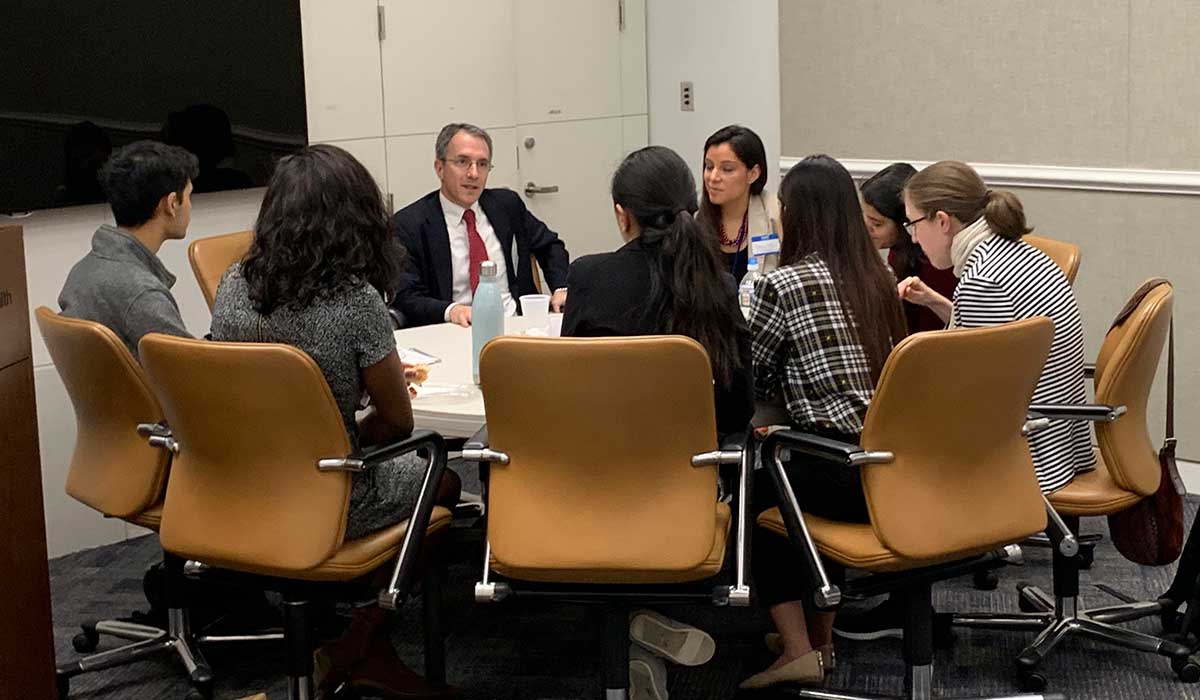News Around NIDDK
Getting to Know: Dr. Anne Sumner
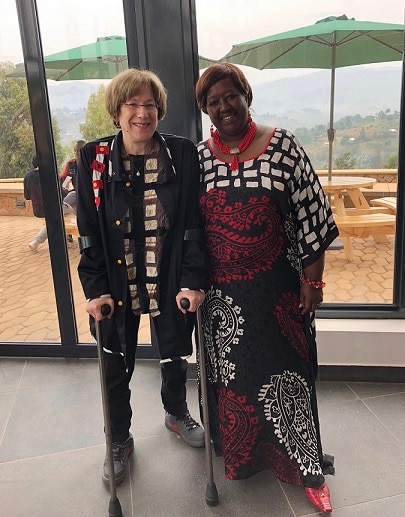
Dr. Anne Sumner, chief of the Section on Ethnicity and Health in the Diabetes, Endocrinology and Obesity Branch, has been at NIH since 1998. Sumner spoke with Lisa Yuan about her research, work in Africa, and advocacy for people with disabilities.
What brought you to the NIH?NIH is Hollywood for scientists, and when I got the opportunity in 1998 to be in the NIH intramural program, I said, “I am going to Hollywood!”
What is the focus of your research?My earliest research looked at the diagnosis and prevention of heart disease and diabetes in African Americans. I discovered that African Americans had low triglyceride levels despite having obesity and insulin resistance, meaning the screening tests that use triglycerides to diagnose diabetes and heart disease would not provide early detection. We later found that triglycerides are even lower in African-born blacks than in African Americans. My current research focuses on identifying the best diagnostic tests for early detection of risk for diabetes and heart disease in Africans.
You have traveled to Africa many times. What do those trips entail?I was invited to present our work at the Africa Diabetes Congress in Cameroon in 2016. Since then, I have gone to Cameroon and Rwanda five times to speak, tour hospitals, visit medical schools, and advise on clinical study design. In July 2019, I visited Uganda to speak about diabetes prevention at the International One Health Conference. As adjunct faculty at the University of Global Health Equity (UGHE), I will be travelling to Rwanda once a year. In November 2019, I will go to Rwanda to speak at an International Women’s Conference.
What is the National Institute of Minority Health and Health Disparities (NIMHD)-NIDDK Rwandan Health Program, and how did it come about?In 2015, the Rwandan Minister of Health, Dr. Agnes Binagwaho, presented the Barmes Lecture. She described how the Rwandan health system was rebuilt after the 1994 genocide. After the lecture, we were introduced. We decided that we would like to have a Rwandan physician work with me for one year and thereby gain clinical research experience to bring back to Rwanda.
Ultimately, it turned into an inter-Institute international venture. NIMHD agreed to provide the physician’s salary, and NIDDK agreed to allow me to use my space, resources, and time for mentoring. The first physician was so successful that both Institutes agreed to support two more physicians. In 2019, the program moved from the Ministry of Health to UGHE, where Dr. Binagwaho is now vice chancellor. Starting with 2019, NIMHD and NIDDK agreed to provide five more years of support. UGHE will provide the physicians a guaranteed university position in Rwanda when they return.
You have achieved so much. Are there other accomplishments at NIH of which you are particularly proud?Most of the scientists who work with me come from underrepresented backgrounds, and I’ve accepted many awards at NIH for diversity and inclusion. This summer, I received the Ruth L. Kirschstein Mentoring Award.
In addition, as I walk with two canes, I am familiar with the challenges faced by people with disabilities. Shortly after I came to NIH in 1998, a Nobel Prize-winning geneticist was giving a lecture at the Masur Auditorium. I did not go because it would likely be too crowded, and I feared being turned away because of a lack of accessible seating. As it is so disheartening to decide to not attend an event because of the fear of being turned away, I decided to advocate for change. Now there are reserved handicapped seating in Masur, Natcher, and Lipsett auditoriums. In short, NIH is significantly more accessible because of my participation.

Understanding study size
By Dr. Aaron Cypess
A common misconception is that the larger a clinical trial, the better the study and the more important the results. However, what is not appreciated about clinical research is that every trial, from proof of concept to Phase 3 drug study, is in fact the smallest it can be.
When evaluating a clinical study, first consider if it is an observational study or a clinical trial. The former is more for gathering information and generating hypotheses. In general, the more people studied, the better the chance to detect small but meaningful relationships. Many variables are not controlled, so conclusions must be regarded as preliminary—and only correlations, not proofs of causation.
Clinical trials aim to confirm and expand a hypothesis, such as the effectiveness of a drug or how a specific process in the body works. Clinical trials are prospective—the assignments of people to groups or interventions are predetermined. Prospective trials are considered the optimal scientific way to prove something about the human body or behavior.
If bigger is better, why should a clinical trial be small? Money and time are factors, but the most important reason is ethical: to minimize risks to patients, best done by studying as few patients as possible. To achieve this goal, clinical trials undergo rigorous vetting in the design stage, during which the principal investigator must decide on the prespecified endpoints. When reviewing a clinical trial, ask what those endpoints were and what the investigators found about them.
If a well-designed clinical trial is small, it means the anticipated effect had to be large and often conceptually groundbreaking. For example, the first proof-of-concept study showing the effectiveness of statins, commonly known to lower LDL cholesterol and reduce risks of cardiovascular disease and stroke, was demonstrated in seven patients with familial hypercholesterolemia.
Another example is in human brown adipose tissue (BAT) research. The critical proof-of-concept studies that showed BAT was functional in adult humans and could respond to drug treatment were accomplished with as few as 5-12 healthy volunteers. (See research published in the New England Journal of Medicine in 2009, Cell Metabolism in 2015, and another study in Cell Metabolism also published in 2015.)
An often-overlooked way of reducing patient risk is through increasing the precision of clinical trial data. In this area, the NIH Clinical Center has a unique gem: the Metabolic Clinical Research Unit. This unit conducts rigorous studies that require strict control over diet, physical activity, and environmental temperature that cannot be replicated elsewhere.
That attention to detail enabled NIDDK researchers to recently discover that an ultraprocessed diet versus an unprocessed diet caused increased food intake and weight gain despite being matched in calories, macronutrients, and other factors. This important study (PDF, 2.7 MB) involved only 20 healthy volunteers. It was a small clinical trial with global impact.
What are the takeaways?
- Clinical trials of any size can prove a point better than an observational study.
- The prespecified endpoints, not the size, of a clinical trial are most important—and if the results confirmed the investigators’ hypotheses.
- Larger clinical trials often confirm something important to change our practice. The small trials are the ones making conceptual breakthroughs that change our thinking.
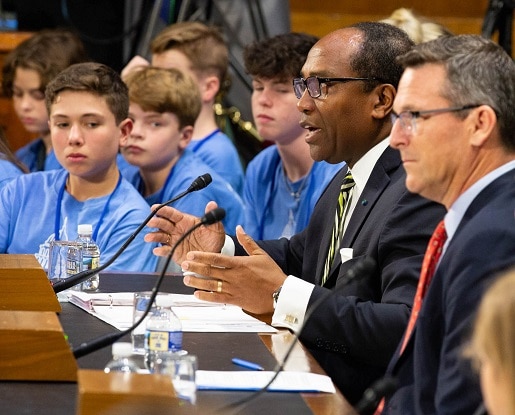
NIDDK director testifies to Congress on type 1 diabetes research
Dr. Mary Hanlon-Tilghman
NIDDK Director Dr. Griffin P. Rodgers testified July 10 about progress in type 1 diabetes research before the Senate Special Committee on Aging, led by Chairman Susan Collins (R-ME) and Ranking Member Bob Casey (D-PA). The hearing, "Redefining Reality: How the Special Diabetes Program is Changing the Lives of Americans with Type 1 Diabetes," was held in conjunction with the Children's Congress, an event sponsored by JDRF.
Testifying with Rodgers and describing the challenges of living with type 1 diabetes were JDRF President and CEO Aaron Kowalski, PhD.; actor Victor Garber; and Children's Congress delegates Ruby Anderson, 9, and Adriana Richard, 16.
In his testimony, Rodgers highlighted recent advances in type 1 diabetes research, including efforts supported by the Special Diabetes Program, such as a finding that a treatment targeting the immune system can prevent onset of clinical type 1 diabetes for at least 2 years. "With the incredible progress already achieved through the Special Diabetes Program and the promise of future research,” he said, “we are extremely hopeful that we can reach our goals of preventing and curing this disease."
Read Rodgers' full testimony and find information about the Type 1 Diabetes Special Statutory Funding Program.
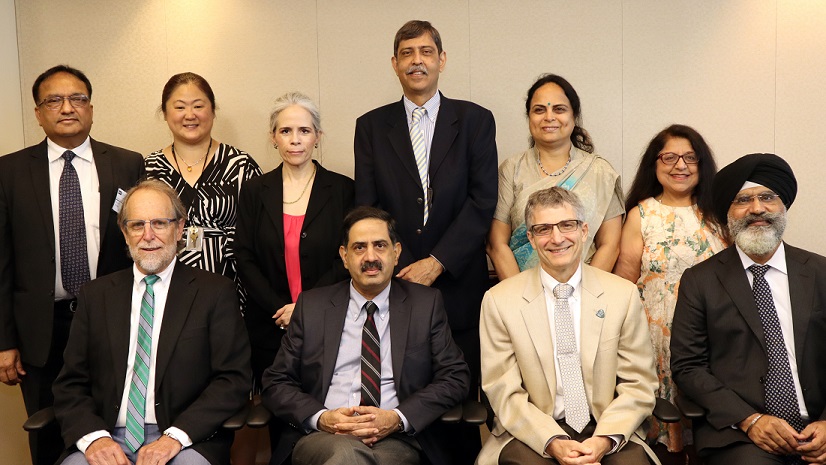
Indo-U.S. Collaboration on Diabetes Research holds 7th joint steering committee meeting
NIDDK Deputy Director Dr. Gregory Germino welcomed Prof. Balram Bhargava, secretary of India’s Department of Health Research and director general of the Indian Council of Medical Research (ICMR), along with colleagues from ICMR, the All India Institute of Medical Sciences, and the Fogarty International Center, to the 7th meeting of the joint steering committee for the Indo-U.S. Collaboration on Diabetes Research in June.
Through this collaboration, established in 2012, NIDDK and ICMR funded three collaborative teams of U.S. and Indian researchers to study diabetes in youth and the role of genetics and environmental factors in diabetes risk. As these projects have drawn to a close and are publishing results, the steering committee members met to identify new research opportunities of shared interest that could advance understanding of diabetes and benefit public health in the United States, India and around the world.
Tackling new questions around type 2 diabetes in youth—which is more aggressive than in adults, harder to treat with currently approved treatments, and threatens life and productivity—was agreed upon as a priority area for new collaborative activities.
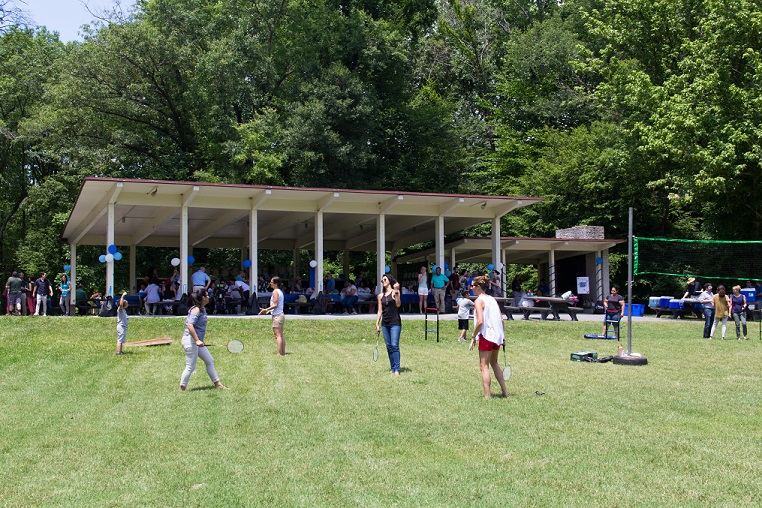
NIDDK holds 2019 employee picnic
On a sunny day in June, NIDDK employees gathered at the Carderock Recreation Area of the C&O Canal National Historic Park for the annual NIDDK picnic. The event was hosted by the Division of Extramural Activities (DEA). NIDDK staff played games and practiced yoga under the shade of the trees. At the end of the event, DEA’s Dr. Karl Malik handed the hosting baton to Dr. Gregory Germino and NIDDK Office of the Director staff, who will helm the 2020 event.
Researchers share ideas, collaborate at annual NIDDK Scientific Conference
The Annual NIDDK Scientific Conference, a two-day research and career development event designed to bring together fellows and scientists from NIDDK's Intramural Research Program, was held in April. The goal of the meeting was to share ideas, foster new collaborations, and promote a sense of community among NIDDK researchers.
